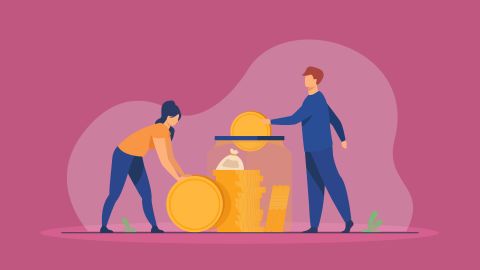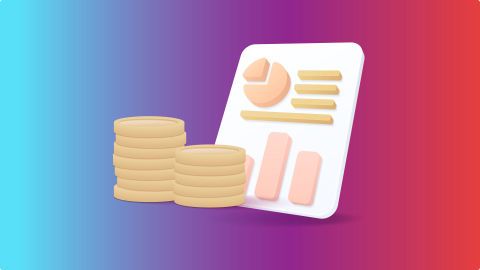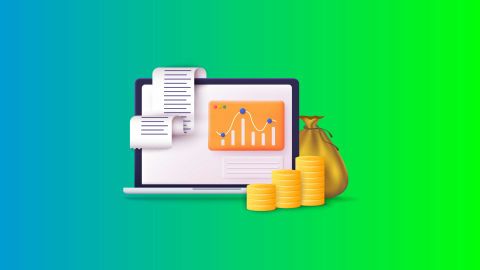Prices keep going up. Milk costs more. So does rent, electricity, even basic groceries. But what if your salary doesn’t grow at the same pace? That’s the problem many government employees and pensioners face—their income stays fixed while the cost of living climbs higher. To fix this, the Indian government offers something called Dearness Allowance (DA).
DA is not a bonus or a perk. It is a variable part of your salary that rises with inflation. It ensures you don’t lose buying power when expenses go up. Whether you’re an active employee or a retired pensioner, DA is one of the most important components of your income. And since the government sees its employees as the backbone of national development, it regularly reviews and updates DA to match changing economic conditions.
DA isn’t the same for everyone—it varies by location. Those working in rural, semi-urban, or urban areas receive different amounts to match regional cost differences. If you’re already in a government job, or planning to take one, understanding DA will help you get the most from your salary package.
Planning your future salary structure? Build a parallel investment habit alongside your DA hikes to maximise long-term gains. Start with Rs. 100 only
The government revises DA twice a year, usually in January and July. In this guide, you’ll learn what Dearness Allowance is, how it works, and why it’s such a vital part of your income.
What Is Dearness Allowance?
Dearness Allowance (DA) is the government’s way of helping public employees and pensioners handle rising living costs. It’s a part of your salary added specifically to fight inflation—that is, the increasing prices of everyday goods and services. When prices go up, your money buys less. DA helps you bridge that gap.
Inflation doesn’t just hit your wallet once; it keeps showing up month after month. And because of that, DA is not a fixed amount. It changes depending on the cost of living in your area. That’s why someone posted in a city may get more DA than someone in a rural town.
DA is reviewed every six months to keep up with inflation. Typically, the government announces one update on 1 January (for January–June) and another on 1 July (for July–December). This ensures that your salary always stays in tune with rising costs—so you can plan your expenses better.
Latest Changes in the Dearness Allowance (DA)
On 4 July 2024, the Indian government announced a new update—DA for central government employees is now 53%, up from 50%. That means a 4% increase has been applied from 1 January 2024, giving a much-needed income boost to thousands of employees and pensioners. Alongside this, Dearness Relief (DR)—which works similarly for pensioners—was raised by the same 4%, now standing at 50%.
But that’s not all. Because DA has hit the 50% mark, several other salary components also got a raise of 25%, as per the 7th Pay Commission guidelines. These include:
Conveyance allowance
House rent allowance
Dress allowance
Children education allowance
Gratuity ceiling
Tough location allowance
Split duty and deputation allowance
Special allowance for childcare
Hostel subsidy
Mileage and daily allowance
TA allowance
Allowance for children of women with disabilities
These updates offer relief from rising expenses and show how DA influences much more than just your base pay.
Calculation of Dearness Allowance (DA)
You might be wondering—how does the government decide DA rates? It’s not random. The calculation is based on a formula linked to the Consumer Price Index (CPI), which tracks the prices of everyday items like food, clothing, fuel and more.
There are two separate formulas used:
For central government employees:
((Average CPI for past 12 months – 115.76) ÷ 115.76) × 100
For central public sector employees:
((Average CPI for past 3 months – 126.33) ÷ 126.33) × 100
The CPI acts like a thermometer for inflation. When prices go up, the CPI rises—and so does your DA. These formulas ensure that your DA is tied directly to how much things cost in real life, giving you fair compensation for rising expenses.
If your salary is inflation-linked, why not ensure your investments are too? Compare mutual fund categories that adapt to market shifts. Compare mutual funds instantly
Pay Commission and the Dearness Allowance
Behind the scenes, there’s a team that checks whether your salary—and DA—still makes sense for today’s economy. That team is the Pay Commission. Every few years, it reviews how government employees are paid, evaluates each salary component, and makes fresh recommendations.
When it comes to DA, the Pay Commission doesn’t just tweak the rate. It also reviews the entire calculation method and may update the multiplication factor used to calculate increases. The 7th Pay Commission, for example, brought several changes to how salaries and allowances are structured—including DA revisions that have helped many employees keep up with inflation.
By looking at current economic trends, cost of living, and inflation data, the Commission ensures your pay doesn’t fall behind the times. Think of it as a salary health check for government workers across India.
Dearness Allowance and Pensioners
DA isn’t just for those currently working in government jobs. Retired employees also benefit from DA hikes. Every time the government increases the DA for active staff, the pensions of retired employees are also revised. This ensures they continue to cope with rising prices even without a monthly salary.
Let’s say you're a retired government employee. If the DA rate goes up, your pension gets a top-up. This extra money makes a big difference, especially during tough economic periods when prices are high and fixed incomes are stretched. And in cases where the pensioner has passed away, eligible family members may also receive DA-linked pension revisions, offering ongoing financial support.
For retirees who get re-employed in certain roles, DA eligibility might vary depending on rules about their last drawn pay. However, pensioners settled abroad due to re-employment typically don’t receive DA, unless they aren’t working again.
Just like DA shields your income from inflation, smart investing shields your future. Open your account today and get started easily. Open your MF account
Importance of DA in Salary Structures
Dearness Allowance might not get the spotlight like basic pay does, but it’s a vital part of the salary puzzle. It keeps your earnings relevant in a changing economy, ensuring you don’t lose value just because prices went up.
Here’s why DA matters:
Keeps your income stable: It protects your salary from inflation so that you can maintain your standard of living.
Boosts morale: When employees know their pay reflects real-world costs, it helps them feel more secure and motivated.
Helps after retirement: DA directly influences pension amounts too. For many retirees, this extra amount ensures financial peace of mind in their non-working years.
In short, DA is not just a benefit—it’s a financial lifeline that adjusts your income to keep pace with rising expenses.
Factors Affecting DA Calculation
Several things influence how much DA you receive—and it’s not just about inflation. Here’s a closer look at the key factors that decide your DA amount:
Base Index: This is the benchmark year used to compare how prices have changed. It sets the starting point for DA calculation.
Consumer Price Index (CPI): This index tracks what people are paying for everyday goods. If CPI goes up, DA usually follows.
Industrial Average: When industries perform well or salaries rise across sectors, the DA may be adjusted to match.
Inflation Rate: The higher the inflation, the more DA is required to maintain purchasing power.
Cost of Living: DA varies depending on where you live—urban, semi-urban or rural—since living costs aren’t the same everywhere.
Employer Guidelines: Public sector units and central government departments may have slightly different rules for DA calculation.
Frequency of Revisions: DA is usually updated every six months—in January and July—based on current inflation data.
These elements work together to make sure your salary stays realistic and relevant in a fluctuating economic environment.
Treatment of Dearness Allowance Under Income Tax
Let’s be clear—Dearness Allowance is fully taxable. That means whatever you receive as DA is added to your total income and taxed just like your basic pay.
When filing your Income Tax Return (ITR), you’ll need to mention the DA amount separately under the salary section. Even though it’s already part of your gross income, it still needs to be clearly stated in your tax form.
Also, if you live in unfurnished rent-free accommodation provided by your employer, the value of that benefit could be counted when calculating your retirement perks. This happens if certain conditions are met—like the accommodation being necessary for your job and officially offered under government rules.
Understanding this helps you avoid tax surprises and plan your salary declarations wisely.
Types of Dearness Allowance
Not all DA is the same. The government gives out two main types of DA to different groups of employees.
1. Industrial Dearness Allowance (IDA)
This is given to public sector employees under the central government. IDA is revised every quarter, based on changes in the Consumer Price Index (CPI). It helps workers in industries keep their salaries in sync with inflation.
2. Variable Dearness Allowance (VDA)
This is for central government employees and is updated twice a year—once in January and again in July. VDA depends on three parts:
The base index, which stays fixed for a set time.
The CPI, which changes every month.
The VDA amount, which stays the same unless officially revised.
DA comes in more than one form—and so do mutual funds. Discover high-performing schemes that align with your financial style. Explore top-performing funds
These types of help ensure that every group of employees gets a fair adjustment based on their role and department.
Role of pay commissions in the calculation of dearness allowance
Every few years, the Pay Commission reviews how government employees are paid—including DA. They look at inflation trends, changes in the CPI, and overall salary structures to make sure employees aren’t falling behind.
The 7th Pay Commission is the latest one that made changes. It didn’t just update basic pay—it also reviewed DA calculation methods and updated the multiplication factor used in DA formulas.
After studying all these aspects, the Commission submits a detailed report. This becomes the basis for salary and pension changes across the country. Thanks to the Pay Commission, millions of government employees and pensioners see their pay and allowances adjusted in a timely and fair way.
Tips for employees on optimising DA benefits
Dearness Allowance doesn’t just show up in your bank account—you can also use it smartly. Here are three easy ways to make the most of your DA:
Keep an eye on your salary structure: Check your payslip and understand how DA changes over time. Knowing your numbers helps you plan better.
Understand how it affects your overall income: As DA increases, your taxable income goes up too. Factor this into your financial planning and tax-saving strategy.
Ask for help when needed: If you’re not sure how DA fits into your salary or retirement planning, speak to your HR team or a financial expert.
A little awareness goes a long way when it comes to making DA work in your favour.
Dearness allowance for pensioners
Just like working employees, pensioners also get DA, and it makes a big difference. Every time the government increases the DA, the pension payout rises too. So, even after retirement, you’re protected against inflation.
If the original employee has passed away, a family member may still be eligible to receive a revised DA as part of the pension structure. However, DA may not always apply if a pensioner is re-employed—especially abroad. In most cases, if a pensioner is working again overseas, they won’t get DA unless they’ve stopped working.
So whether you’re retired or planning ahead, knowing how DA supports pensioners helps you prepare better for financial stability post-retirement.
Role of pay commissions in DA calculation
You’ve heard of the Pay Commission—but what does it actually do with DA? Well, it’s the official body that reviews how much government employees should earn based on inflation and living expenses.
When the cost of living rises, the Commission examines CPI data and inflation trends to recommend DA changes. It even suggests how frequently DA should be revised and what formulas to use.
These decisions affect millions of people across India, from junior staff to top-level pensioners. Thanks to their analysis, your salary and pension stay aligned with real-world costs, helping you maintain your lifestyle despite rising prices.
Dearness allowance hike as per new developments under the budget
In a welcome move, the Indian government recently announced another DA hike of 2%, benefiting over 5 million employees and nearly 5.5 million pensioners. Approved by the Union Cabinet under Prime Minister Narendra Modi, this revision aims to keep your income balanced against inflation.
If you look back to 2018, the budget also brought a significant jump in DA—from 5% to 7%—which helped over 11 million people. These regular increases are not just numbers—they’re meaningful boosts to your income that make your day-to-day life more manageable.
The most recent updates are set to benefit around 48.41 lakh central government employees and 61.17 lakh pensioners, making this one of the largest coverage expansions in DA history.
Just like DA revisions ease financial strain, the right investment can ease your tax burden. Explore tax-saving funds
Difference between DA and HRA
DA and HRA may both be part of your salary, but they serve completely different purposes:
Aspect |
Dearness Allowance (DA) |
House Rent Allowance (HRA) |
Purpose |
Helps tackle inflation and protect purchasing power |
Helps cover rental expenses if you're not in govt housing |
Calculation |
Percentage of basic pay, linked to the CPI |
Varies by city (urban, semi-urban, rural) |
Tax Treatment |
Fully taxable |
Tax exemption possible under Section 10(13A) |
While DA adjusts your income for price rises, HRA supports you if you’re paying rent. And only HRA offers tax benefits—DA doesn’t.
How is DA different from other types of allowances?
Dearness Allowance has one clear purpose—to fight inflation. But other allowances serve very different needs. Let’s break it down:
Allowance Type |
Why It’s Given |
How It’s Calculated |
Tax Treatment |
DA |
To maintain buying power during inflation |
% of basic salary, revised by CPI |
Fully taxable |
HRA |
To cover rental expenses |
% of basic salary; changes with city |
Tax deduction available under certain rules |
Special Allowance |
For job-specific costs |
Fixed or % of salary; employer-defined |
Fully taxable |
Medical Allowance |
For basic medical expenses |
Fixed; reimbursements may vary |
Fully taxable (unless reimbursed) |
Transport Allowance |
For daily commute costs |
Fixed or usage-based |
Taxable above specified limit |
Education Allowance |
To support children’s education |
Fixed per child; annual caps |
Tax benefits in certain cases |
Dearness Allowance Merger
When Dearness Allowance crosses a certain threshold, the government considers a major shift—merging DA with your basic salary. According to official guidelines, this merger must happen when DA reaches 50% of your basic pay.
Why does this matter? Because many other salary components are calculated as a percentage of basic pay. So, once DA merges with it, your base salary increases—automatically raising other allowances like HRA, transport, gratuity, and more.
Right now, DA has already touched 50%, and many employee groups have requested the government to carry out the merger. While no final decision has been taken yet, if approved, this change could lead to a noticeable jump in your take-home pay and retirement benefits.
A DA merger can transform your payslip—just like a SIP can transform your long-term savings. Begin SIP at Rs. 100
Conclusion
Dearness Allowance might seem like just another line in your salary slip, but it’s much more than that. It’s your financial shield against inflation—helping you maintain the same lifestyle even when prices are rising all around you.
For government employees, DA boosts monthly earnings. For pensioners, it offers added security when income sources shrink. And as inflation fluctuates, the government adjusts DA every six months to keep your income in sync with real-world needs.
With DA now at the 50% mark, the Pay Commission may soon announce a merger with basic pay—bringing further benefits to millions of workers and retirees. Understanding how DA works ensures you can better manage your salary, file taxes properly, and plan for a more stable financial future.




